It’s been a big year for visual effects on television – here’s a look at just some of the highlights as we explore episodic television visual effects in Marvel’s Agents of S.H.I.E.L.D., Hannibal, Hawaii Five-O, Sleepy Hollow, Game of Thrones, Vikings and Orphan Black.
Marvel’s Agents of S.H.I.E.L.D.
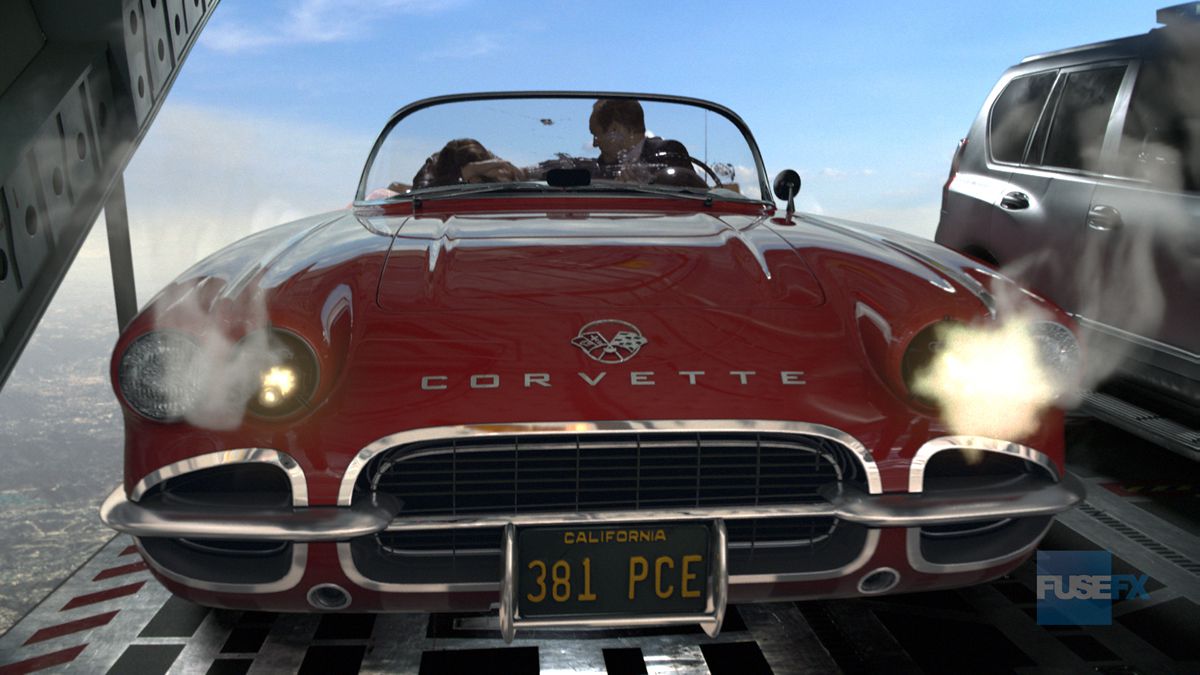
At the very beginning of this ABC series, fxguide spoke to overall visual effects supervisor Mark Kolpack on what audiences could expect. Now we chat to vfx supe Kevin Lingenfelser from FuseFX, the show’s lead vendor about how they pulled off effects for ‘The Bus’, Lola, gravitonium and other shots in the series. For the signature plane in the show – a modified C17 known as The Bus – FuseFX modeled CG components in 3ds Max which was also used for animation. Texturing was carried out in MARI and Photoshop with V-Ray for rendering and compositing done in NUKE. Effects work including for dirt and dust and exhaust was done in Houdini and FumeFX. Oftentimes, the Bus, which has VTOL capabilities and can do u-turns, travels through completely synthetic environments, commonly achieved as two and a half-D matte paintings by FuseFX.
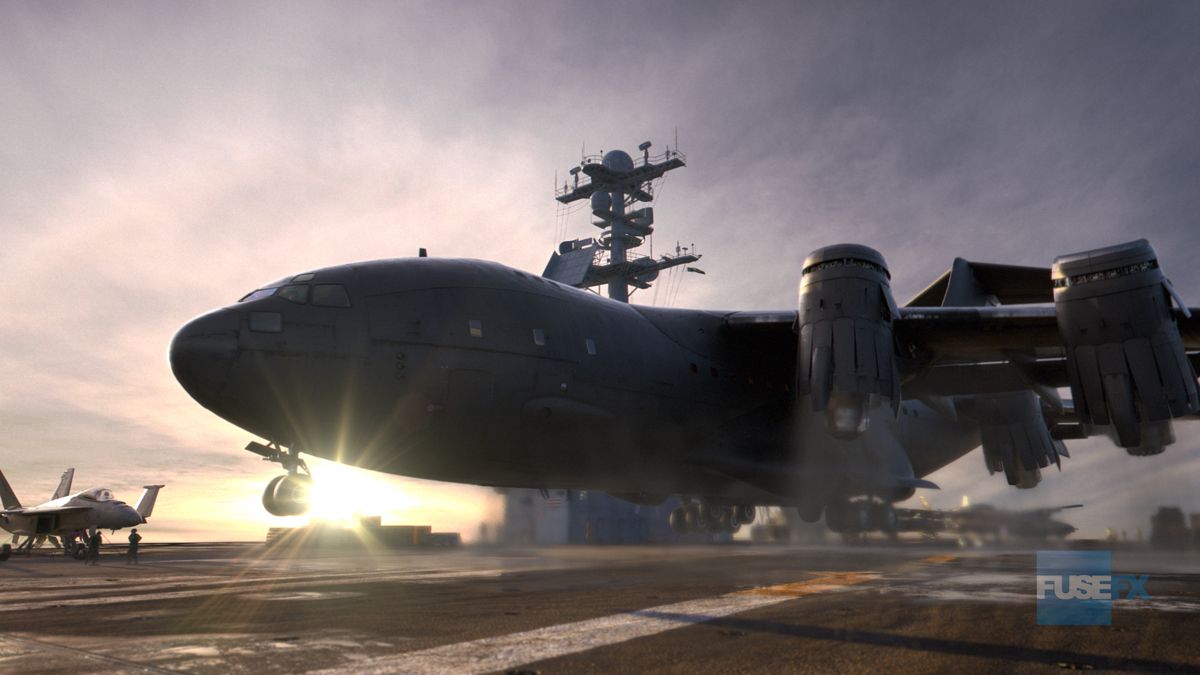
“It really becomes like a character in certain scenes or shots because it’s so big,” says Lingenfelser. “So one of the things we were vigilant about, yet struggled with at times, was scale and how lighting can affect that. Textures, whether painted in MARI/Photoshop or from live action reference are another factor and have a huge impact on the realism. They have to be extremely hi-res with the correct detail otherwise the best lighting in the world will result in an ‘fake looking’ object. We’ve built a template in NUKE to allow us to take the disparate CG buffers (e.g. diffuse, reflection, etc.) and tweak them individually, then re-combine them to have the final look integrate seamlessly into the CG environment or live action plate.”
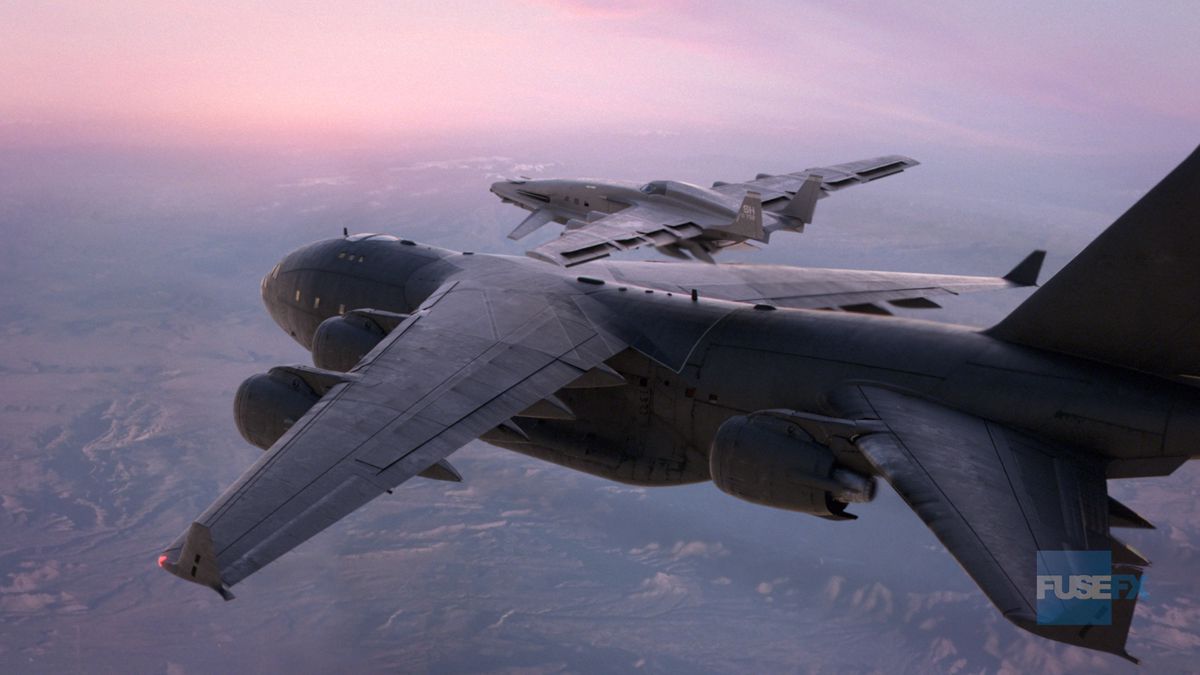
Agent Coulson’s 1962 Corvette Lola is similarly somewhat of its own character in the series. A real car was used for numerous shots but when the vehicle appears in hover mode, FuseFX would add CG tires and other effects elements. “In some shots it was a synthetic Lola, Coulson and CG sky,” notes Lingenfelser. “They filmed it on a very sophisticated gimbal rig that let them use the car. We might preserve just the actors because we’d need to add in reflections of the environment.”
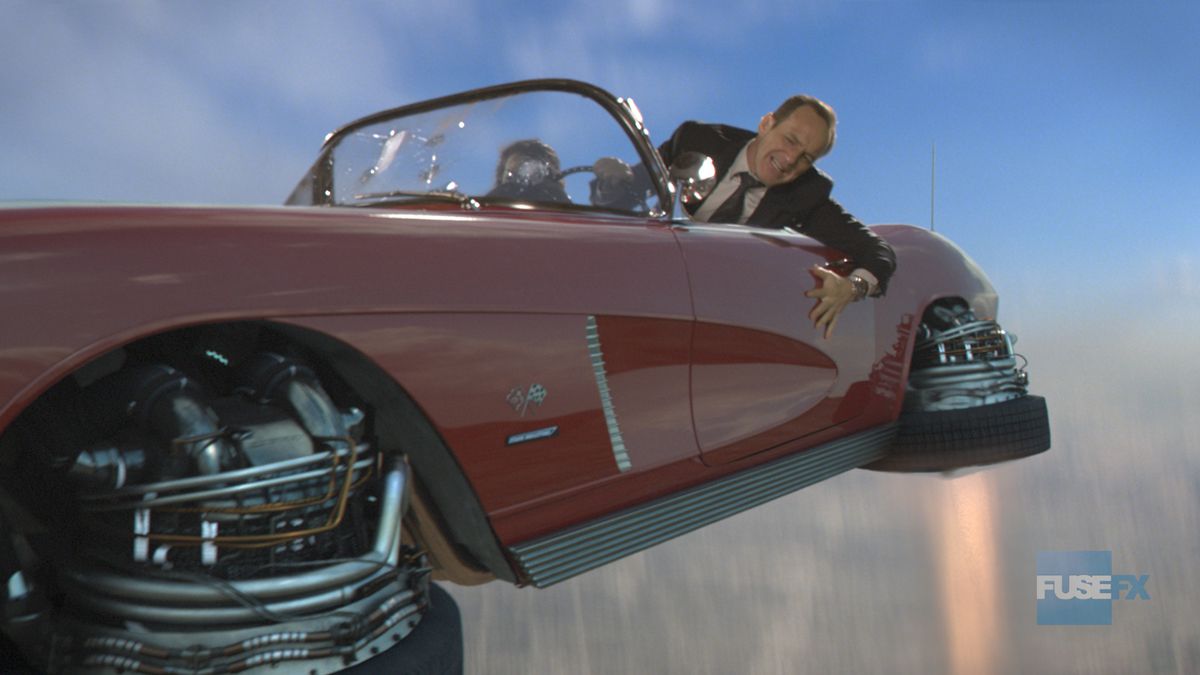
In one episode, Dr. Franklin Hall falls into a gravitonium generator and is covered in the silvery liquid – an effect also completed by FuseFX. “For shots where the gravitonium is in its ‘neutral’ or ‘ball like’ state,” explains Lingenfelser, “FX artists used Thinking Particles in 3DsMax controlled by a custom field as well as repulsion/bounce operators to make them act more like a fluid. These particles were then brought into Frost from Thinkbox and skinned for rendering.” “Then for shots where the gravitonium is seen enveloping Dr. Hall,” continues Lingenfelser, “FX artists used Houdini flip fluids and a vop force operator to create a spherical gravity with some turbulent noise to pull the gravitonium back after the splash to give the gravitonium more sentient and deliberate motion.”
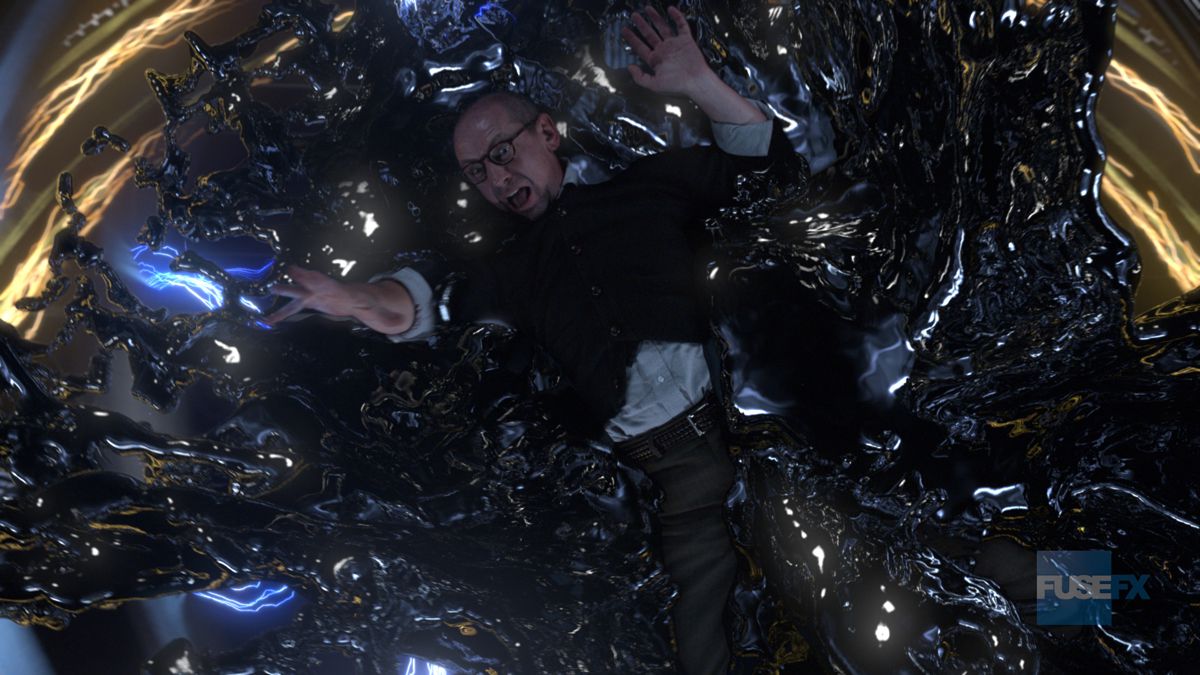
Further FuseFX work included more vehicle builds such as John Garett’s jet, prosthetic limb replacement effects for Mike Peterson (as Deathlok), drone helicopters and various digi-doubles. Marvel’s Agents of S.H.I.E.L.D. returns Tuesdays this Fall at 9/8c on ABC.
Hannibal
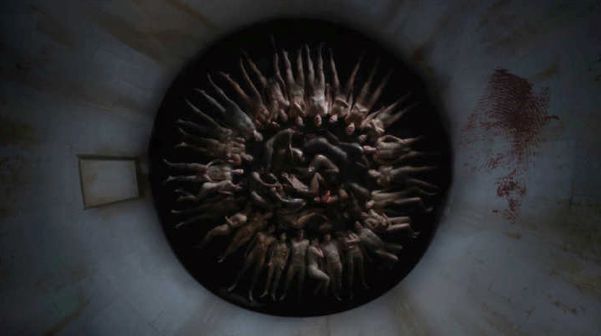
Rocket Science VFX are behind the visual effects of season 2 of Hannibal. The studio returned from the first series to show all kinds of weird and wonderful scenes of death as well as ethereal dream-like creatures imagined by FBI special investigator Will Graham. At Rocket Science, supervisory duties were shared between VFX supervisors Robert Crowther and Anthony Paterson. We talked to them about some of season 2’s specific shots. Will sees a stag throughout the series as a representation of how Dr. Hannibal Lecter is becoming an intruding figure upon his imagination. In one scene, the stag jumps through a window of Will’s home. Rocket Science would complete the shot with a CG stag, but plates were filmed at a separate location than principal photography. Here, the SFX team pushed antlers through a plane of glass as the scene was filmed in high speed so that it could shown in slow-motion for maximum impact.
Watch Rocket Science’s vfx breakdown reel.
“Then we also shot HDR stills of the location in order to capture as much information about the lighting as possible,” says Paterson. “In post, we started with simple animation with a version of the stag that could be cut by the editors – that was done very roughly and then taken through final animation, lighting, rendering and compositing.” Will’s psychological transition to the stag creature begins with him sprouting antlers out of his back. “That was an interesting process figuring out how to frame shots that would work on the television schedule,” says Crowther. “Initially they sprouted out of his back, and then in the episode where there’s a reference to a man who has grown into a tree, Will also envisions his antlers growing into a tree size. We just used make-up tracking markers applied to his back – literally black dots placed on his back which we tracked to.”
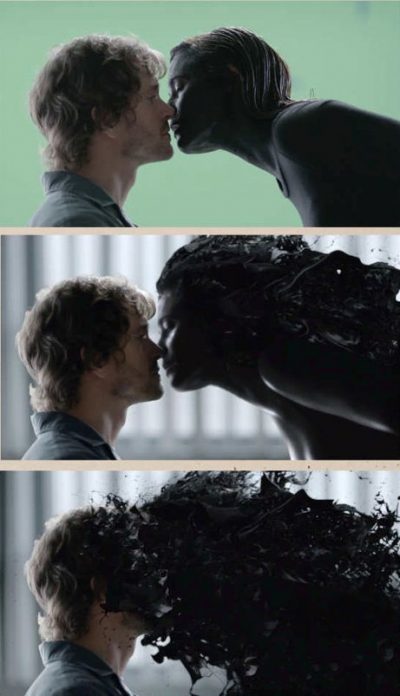
Another signature shot was that of Alana Bloom appearing to Will as a spiritual entity made of black oil. On set, a silicone based make-up was used on the actress, who also wore a body suit and had her hair slicked back. Rocket Science then completed the shot with Maya for CG and Houdini for effects animation, also adding in some filmed elements to the final comp. Another episode shows the aftermath of a killer placing drugged human victims inside a silo, having sprayed them with preservation resin. “They wanted that when seen from above to be like the eye looking up at God,” outlines Paterson. “The director found some human mosaic images – here he wanted it to look like it was made up of different tones. We hired a group of actors who were willing to appear in the nude in this silo. We did a number of tests where we laid out the actors in different arrangements for the correct eye shape from above. We ultimately did a piece of concept art and became the template for the shot.” The scene was shot in a partial silo set which Rocket Science extended and also augmented the actors to make them lie perfectly still. “Also,” says Paterson, “the actors were wearing a small amount of modesty material, but there was still too much nudity for broadcast so we painted in shadows to hide things not suitable for broadcast television.”
For shots of Beverly Katz having been sectioned vertically and displayed in tableau, Rocket Science also referenced shot material. “The prosthetics team built the initial contraption from a mold of her body and created a composite sculpture out of that,” explains Crowther. “They cut that up and built body parts out of it. They sandwiched each piece between pieces of glass.” Since the pieces moved around, Rocket Science replicated the slices in CG based on the prosthetic models.” Although that sequence, in particular, was one of the more gruesome in the season, the visual effects team notes that none of their work was intended as gory just for the sake of gore. “It’s about interesting imagery,” says Crowther. “We’re not trying to shock anybody. We’re trying to create an interesting psychologically stimulating image.”
Hawaii Five-O
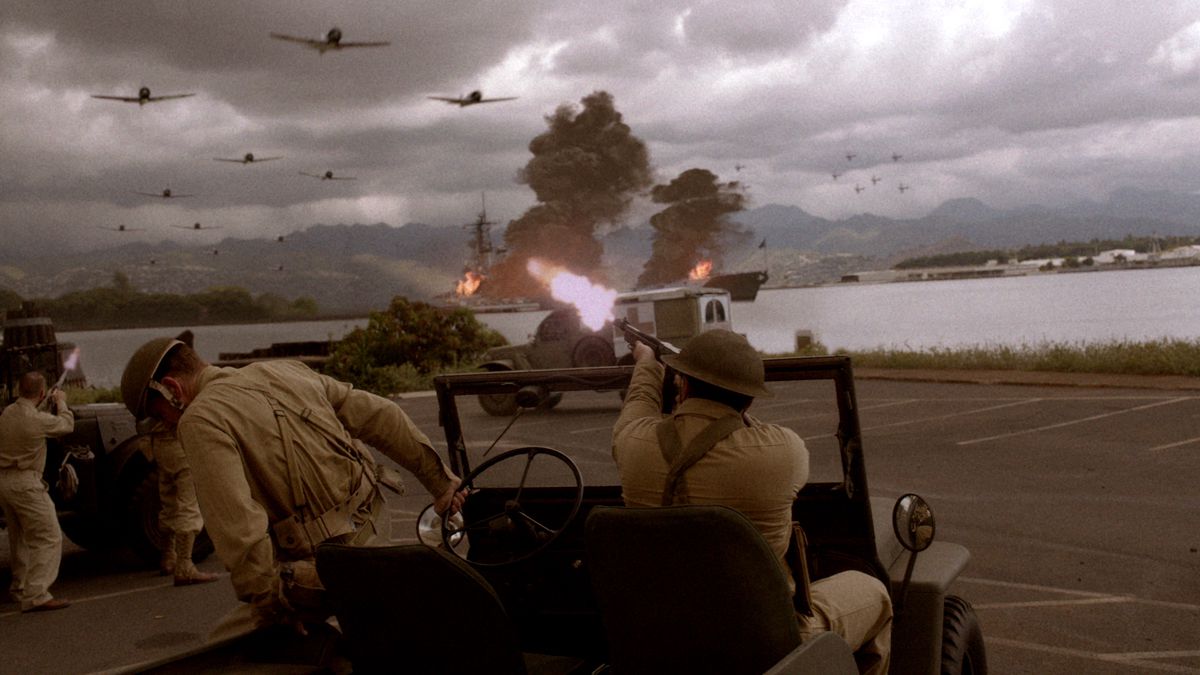
CBS’ Hawaii Five-O features visual effects from Encore, led by visual effects supervisor Armen Kevorkian. Episode 10 of season 4 includes flashbacks to the attack on Pearl Harbor with Encore re-creating Japanese aircraft, American battleships, explosions, set extensions and various environments. The Pearl Harbor shots were informed by storyboards and previs, and the use of historical documents and location naval base material as reference.
Watch a breakdown reel for the episode. “The VFX for this particular episode were much more involved than what you see with a traditional post schedule,” Kevorkian said in a release on the work. “Not only did we have a tight window to execute complex work, but we also had to do so in a way that was respectful to the actual events. Since we are in such good rhythm with the production, we were able to get a jump on things with careful research and planning, which was helpful in keeping on track.”
Sleepy Hollow
We covered the visual effects of this Fox series earlier in the year on fxguide, but now we also present a breakdown of some of the key shots. Enjoy!
Watch a breakdown for Sleepy Hollow.
Game of Thrones
The visual effects for Season 4 of the HBO series were produced by several facilities. Stay tuned for some in-depth coverage on fxguide, but in the meantime here’s Mackevision’s reel showing their contribution of environments and various shots.
Vikings
Season 2 of the History Channel series Vikings is aided with visual effects by Mr. X. Inc. Here’s a breakdown of their ocean, ship and fighting VFX.

Pingback: VFX in TV: A to V (Agents of S.H.I.E.L.D to Vikings and more) | Animationews
Pingback: VFX in TV: A to V (Agents of S.H.I.E.L.D to Vikings and more) | Occupy VFX!
Pingback: FXPHD – VFX in TV, A to V: Agents of S.H.I.E.L.D to Vikings & More | Lost Boys VFX
Pingback: VFX Compositing Books - taukeke